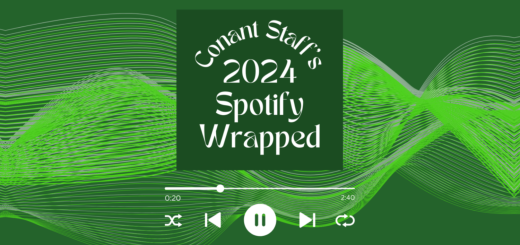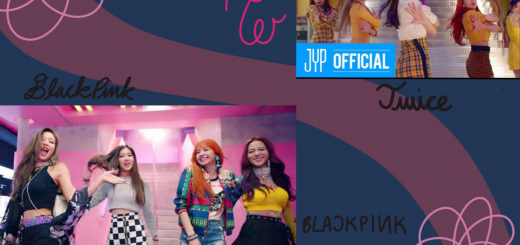SZA’s album “SOS” decoded
 From Wikipedia under fair use.
From Wikipedia under fair use. After almost six years since the release of her hit debut album, critically-acclaimed RnB artist, SZA, recently released her long-awaited second studio album, titled “SOS.”
Although SZA has been releasing music since the early 2010’s, the release of “CTRL,” her first full-length album, is what initially launched her to fame in 2017. The immense popularity of “CTRL” then gave SZA the opportunity to make a song with famous rapper Kendrick Lamar for Marvel’s “Black Panther.” With all the new exposure, she continued to garner attention and went on to collaborate with even bigger artists like Doja Cat, Megan Thee Stallion, and Cardi B.
As the hype being built around SZA grew exponentially, her second album started to become highly anticipated by her fans, as well as by casual listeners of her music. In December of 2022, she announced the release of her cryptic new album: “SOS.” The announcement of the title alone sparked the curiosity of many, as SOS happens to be a well-known distress signal in morse code. When the album cover art was eventually released, it caught the attention of even more people and led to the rise in theories about the album. The cover art features SZA sitting at the edge of a diving board in the middle of the ocean, which fans noticed was inspired by an almost identical picture of Princess Diana. Fans then theorized that the image on the cover art suggested that SZA would explore themes of isolation and loneliness throughout the album, while the title indicated that she no longer wanted to feel isolated and needed saving.
Since there are so many theories surrounding the true meaning behind this mysterious album, I will be analyzing a few notable songs on the album in order to figure out what messages SZA might have been trying to convey through “SOS.”
The album starts off with the title track “SOS,” which interestingly strays from the typical song arrangement. It’s the only track on the album with a very unique sound, almost like it’s being played underwater or at a live concert. At the very beginning of the track you can hear morse code being used in the form of beeping noises that spell out the letters S, O, and S. Immediately after the morse code comes the sound of a gunshot, which sets the tone for the album as many of the songs, including the title track, express violence and aggression in order to exaggerate the anger SZA feels about a past relationship.
The second track, “Kill Bill” is inspired by a movie of the same name, and has quickly become one of the most popular songs on the album. It starts off with eerie sounding instrumentals, and then transitions into some ironic lyrics. SZA calls herself “mature,” but then grows so jealous of seeing her ex-boyfriend with a new girl, that she would rather kill him than see him move on. This song has that same touch of violence as “SOS,” but also features what seems like an inner monologue where SZA knows she’s not thinking rationally and talks herself out of resorting to violence.
The next two songs,“Seek and Destroy” and “Low,” are some of my personal favorites. They incorporate a mix of vocals and rap that work really well together. “Seek and Destroy” is somewhat similar to “Kill Bill,” in the sense that SZA still seems to want to ruin her ex’s life for what he did to her. But, in “Seek and Destroy,” she actually seems to be happy she left him and isn’t obsessing over him anymore. “Low,” on the other hand, seems to shift from the themes of hate and anger to just not caring about love anymore and not wanting a serious relationship ever again.
After the first few songs, the album takes a completely unexpected turn with the track “Love Language.” In this song, SZA switches up from expressing rage and jealousy to wanting love and understanding. It’s comparatively a more optimistic and slower-paced song in which it seems like she’s met someone new and wants to finally move on with her life. Aside from the fact that “Love Language” shifts the entire tone of the album, it also uses a sample from one of her old songs called “Hit Different.” The sample is at the very end of the song, and while subtle, it could be hinting at the fact that SZA is still unwilling to let her past go.
In the transition between “Love Language” and the next track,“Blind,” there is that same morse code beeping like in “SOS” and this time, the code spells out the word “distress,” hinting at the fact that she’s back where she started. The song “Blind” actually does indicate that SZA went back into the cycle of toxicity that she just seemed to get out of because the lyrics talk about purposely ignoring all the problems in her life.
After “Blind,” the rest of the entire album seems to be a constant back and forth of either hating an ex and being toxic or being in love and happy. These switches in tone could be trying to emphasize the fact that she was actually going back and forth between these feelings in real life, which is why she was so distressed and felt she needed to be saved.
The album ends with the track “Forgiveless,” but it seems like the real story ends at the song “Open Arms,” featuring Travis Scott, in which SZA finally admits she needs to let go of everything in the past and that she’s the only one that’s been holding herself down. Throughout the album, several different topics and emotions are explored which makes each track feel like a different piece to understanding the true meaning behind the album. By the end, it seems that the final message of “SOS” is that a person cannot be saved by anyone but themselves and everyone is responsible for their own peace and happiness.




Perfectly put together. Still listening to this album to date and leaves me always to come back so I have decided to go through the back story. Thank u It also makes me feel like I have been through a relationship like that even though I have never been in any relationship 🥰
I don’t under stand nun of this